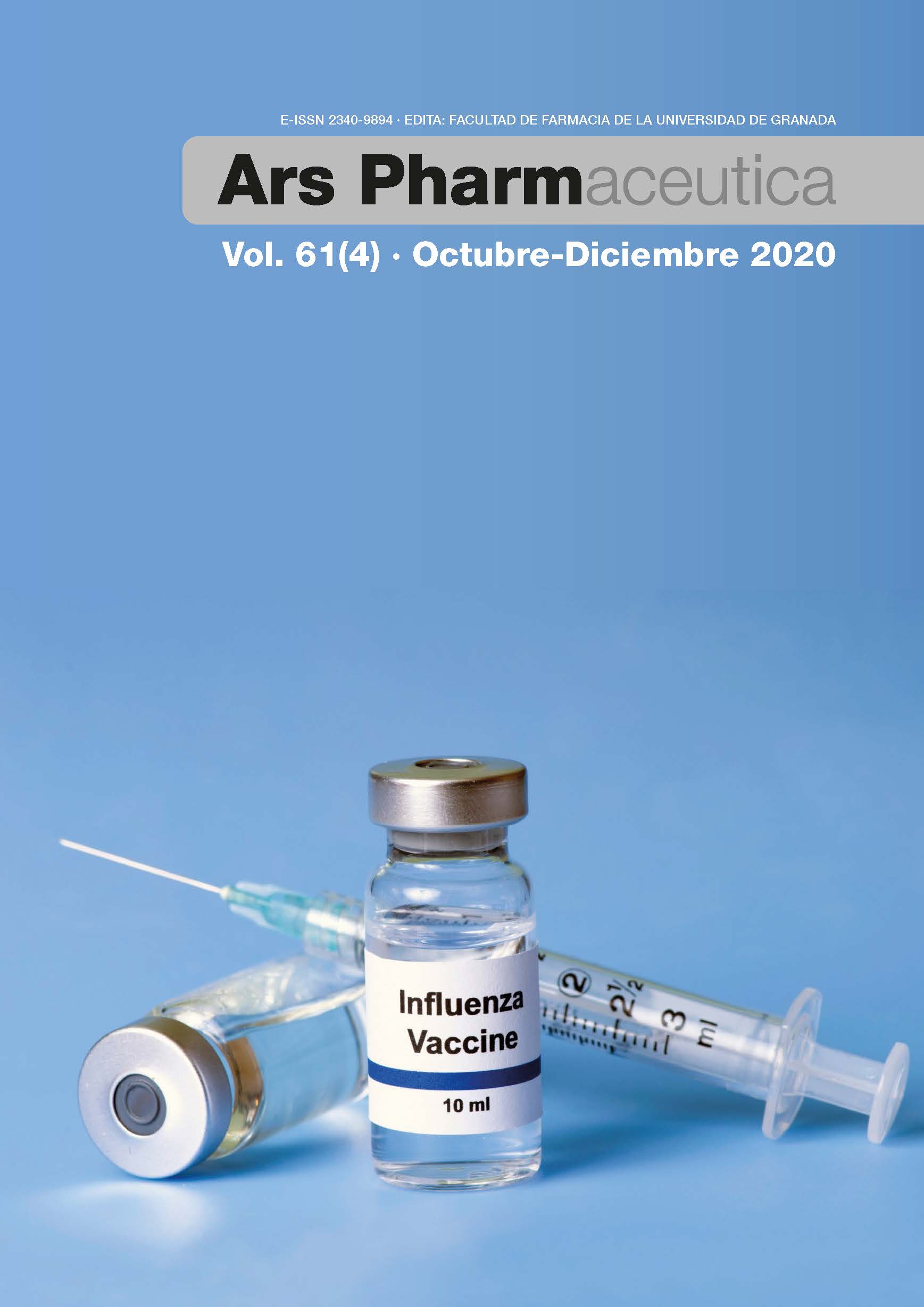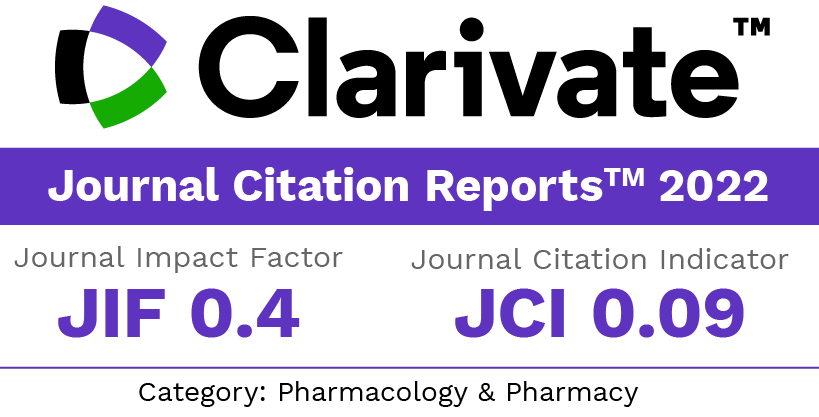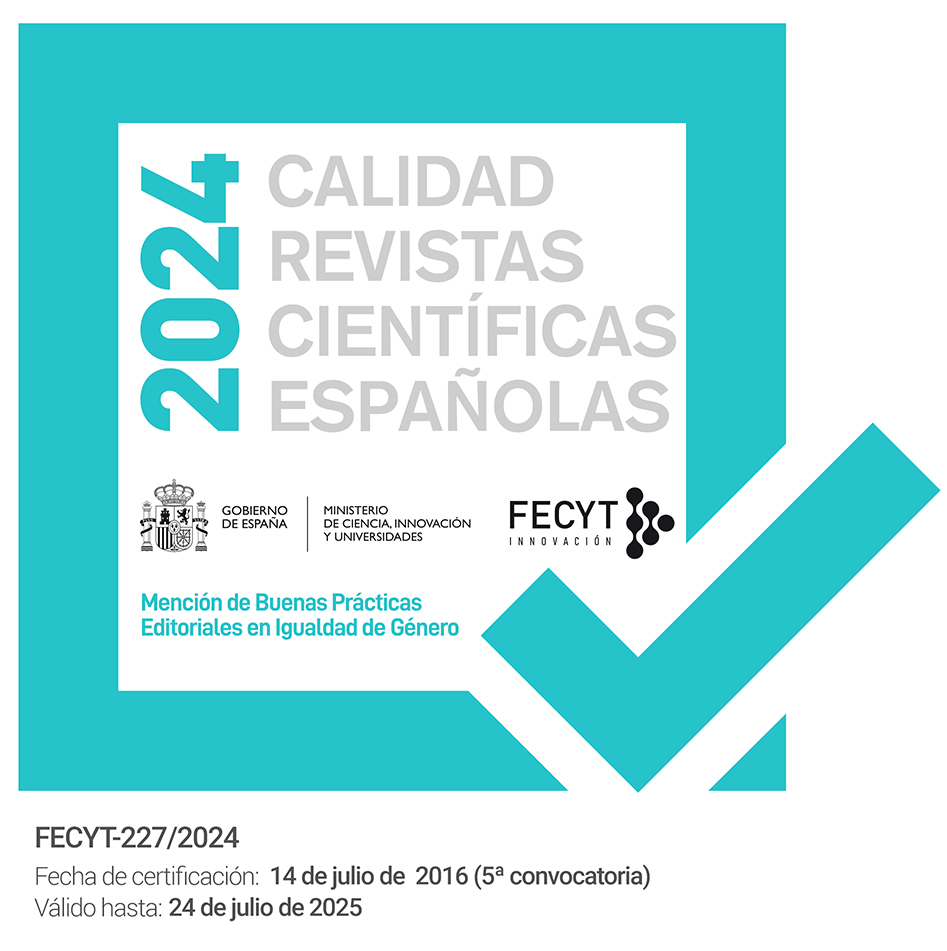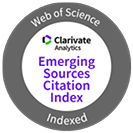Potential pharmacological candidates Transmembrane protease, serine 2 inhibitors 2019-ncov treatment.
Keywords:
TMPRSS2, ACE II, COVID-19, 2019-nCoV, Coronaviridae.Abstract
Introduction: Coronavirus disease 2019 (COVID-19) caused by the SARS-CoV-2 virus with characteristic of infecting the respiratory tract, causing severe acute respiratory syndrome. The virus uses the ACE II receptors and the transmembrane protein TMPRSS2 initial step to enter the host cell, this contribution described different types of drug, to perform its inhibition in initial step adhesion.
Methodology: Non-systematic review of articles with the help of preset keywords
Results: In this review we will present drugs that inhibitors of this type of receptor therefore these drugs could be considered potential candidates to mitigate the spread of SARS-CoV-2.
Downloads
References
Ruiz-Bravo A, Jimenez-Varela M. SARS-CoV-2 y pandemia de síndrome respiratorio agudo (COVID-19). Ars Pharm. 2020; 61(2), 63-79. doi:10.30827/ars.v61i2.15177.
Montes A, Coronell W, Baldiris R. Can house flies mechanically carry and/or transport sars-cov-2? Int J Clin Virol. 2020; 4: 076-078. doi: 10.29328/journal.ijcv.1001019.
Corman V, Lienau J, Witzenrath M. Coronaviruses as the cause of respiratory infections. Der Internist. 2019; 60(11): 1136-1145. doi: 10.1007/s00108-019-00671-5.
WHO. Coronavirus diastase (COIVD-2019) situation reports [Internet] 2020 Available in: https://www.who.int/emergencies/diseases/novel-coronavirus-2019/situation-reports/.
Liu J, Liao X, Qian S, Yuan J, Wang F, Liu Y, Zhang Z. Community Transmission of Severe Acute Respiratory Syndrome Coronavirus 2. Emerging infectious diseases Shenzhen, China. Emerg Infect Dis. 2020; 26(6). doi:10.3201/eid2606.200239.
Ong S, Tan Y, Chia P, Lee T, Ng O, Wong M, Marimuthu K. Air, surface environmental, and personal protective equipment contamination by severe acute respiratory syndrome coronavirus 2 (SARS-CoV-2) from a symptomatic patient. JAMA. 2020;323(16):1610–1612. doi:10.1001/jama.2020.322.7
Xiao K, Zhai J, Feng Y, Zhou N, Zhang X, Zou J, Zhang Z. Isolation and characterization of 2019-nCoV-like coronavirus from Malayan pangolins. BioRxiv. 2020; 02.17.951335; doi:10.1101/2020.02.17.951335.
Hoffmann M, Kleine-Weber H, Schroeder S, Krüger N, Herrler T, Erichsen S, Müller M. SARS-CoV-2 cell entry depends on ACE2 and TMPRSS2 and is blocked by a clinically proven protease inhibitor. Cell. 2020; 181, 271–280. doi:10.1016/j.cell.2020.02.052
Ueda M, Uchimura K, Narita Y, Miyasato Y, Mizumoto T, Morinaga J, Shiraishi N. The serine protease inhibitor camostat mesilate attenuates the progression of chronic kidney disease through its antioxidant effects. Nephron 2015; 129:223-232. doi:10.1159/000375308.
Bittmann S, Luchter E, Weissenstein A, Villalon G, Moschüring-Alieva E. TMPRSS2-Inhibitors Play a Role in Cell Entry Mechanism of COVID-19: An insight into Camostat and Nafamostat. J Regen Biol Med. 2020; 2(2): 1-3. doi:10.37191/Mapsci-2582-385X-2(2)-022
Yamamoto M, Kiso M, Sakai-Tagawa Y, Iwatsuki-Horimoto K, Imai M, Takeda M, Matsuda Z. The anticoagulant nafamostat potently inhibits SARS-CoV-2 infection in vitro: an existing drug with multiple possible therapeutic effects. bioRxiv. 2020.04.22.054981; doi:10.1101/2020.04.22.054981
Lucas J, Heinlein C, Kim T, Hernandez S, Malik M, True L, Clegg N. The androgen-regulated protease TMPRSS2 activates a proteolytic cascade involving components of the tumor microenvironment and promotes prostate cancer metastasis. Cancer Discov. 2014; 4(11): 1310-1325. doi: 10.1158/2159-8290.CD-13-1010.
Shen L, Mao H, Wu Y, Tanaka Y, Zhang W. TMPRSS2: A potential target for treatment of influenza virus and coronavirus infections. Biochimie. 2017;142:1-10. doi:10.1016/j.biochi.2017.07.016
Böttcher-Friebertshäuser E, Stein D, Klenk H, Garten W. Inhibition of influenza virus infection in human airway cell cultures by an antisense peptide-conjugated morpholino oligomer targeting the hemagglutinin-activating protease TMPRSS2. J Virol. 2011; 85(4): 1554-1562. doi: 10.1128/JVI.01294-10
Limburg H, Harbig A, Bestle D, Stein D, Moulton H, Jaeger J, Koczulla A. TMPRSS2 is the major activating protease of influenza A virus in primary human airway cells and influenza B virus in human type II pneumocytes. J Virol. 2019; 93(21): e00649-19. doi:10.1128/JVI.00649-19.
Bestle D, Heindl M, Limburg H, Pilgram O, Moulton H, Stein D, Becker S. TMPRSS2 and furin are both essential for proteolytic activation and spread of SARS-CoV-2 in human airway epithelial cells and provide promising drug targets. bioRxiv. 2020.04.15.042085; doi:10.1101/2020.04.15.042085
Zuñiga J, Cortes A. The role of additive manufacturing and antimicrobial polymers in the COVID-19 pandemic. Expert Rev Med Devices. 2020.17:6, 477-481, doi: 10.1080/17434440.2020.1756771
Nickols N, Dervan P. Suppression of androgen receptor-mediated gene expression by a sequence-specific DNA-binding polyamide. PNAS. 2007; 104(25): 10418-10423. doi: 10.1073/pnas.0704217104.
Puc J, Kozbial P, Li W, Tan Y, Liu Z, Suter T, Ohgi K, Zhang J, Aggarwal A. Rosenfeld M.G. Ligand-dependent enhancer activation regulated by topoisomerase-I activity. Cell. 2015; 160:367–380.doi: 10.1016/j.cell.2014.12.023
Corponi F, Fabbri C, Bitter I, Montgomery S, Vieta E, Kasper S, Pallanti S, Serretti A. Novel antipsychotics specificity profile: A clinically oriented review of lurasidone, brexpiprazole, cariprazine and lumateperone. Eur Neuropsypharm. 2019; 29(9): 971–985. doi:10.1016/j.euroneuro.2019.06.008
Elmezayen A, Al-Obaidi A, Şahin A. T, Yelekçi K. Drug repurposing for coronavirus (COVID-19): in silico screening of known drugs against coronavirus 3CL hydrolase and protease enzymes. J Biomol Struct Dyn 2020; 1-12.doi: 10.1080/07391102.2020.1758791
Alan C, Real J. P, Palma S. D. High Dose Of Ascorbic Acid Used In Sars Covid-19 Treatment: Scientific And Clinical Support For Its Therapeutic Implementation. Ars Pharm. 2020. 61(2), 145-148.doi: 10.30827/ars.v61i2.15164.
Downloads
Published
How to Cite
Issue
Section
License
The articles, which are published in this journal, are subject to the following terms in relation to the rights of patrimonial or exploitation:
- The authors will keep their copyright and guarantee to the journal the right of first publication of their work, which will be distributed with a Creative Commons BY-NC-SA 4.0 license that allows third parties to reuse the work whenever its author, quote the original source and do not make commercial use of it.
b. The authors may adopt other non-exclusive licensing agreements for the distribution of the published version of the work (e.g., deposit it in an institutional telematic file or publish it in a monographic volume) provided that the original source of its publication is indicated.
c. Authors are allowed and advised to disseminate their work through the Internet (e.g. in institutional repositories or on their website) before and during the submission process, which can produce interesting exchanges and increase citations of the published work. (See The effect of open access).



















